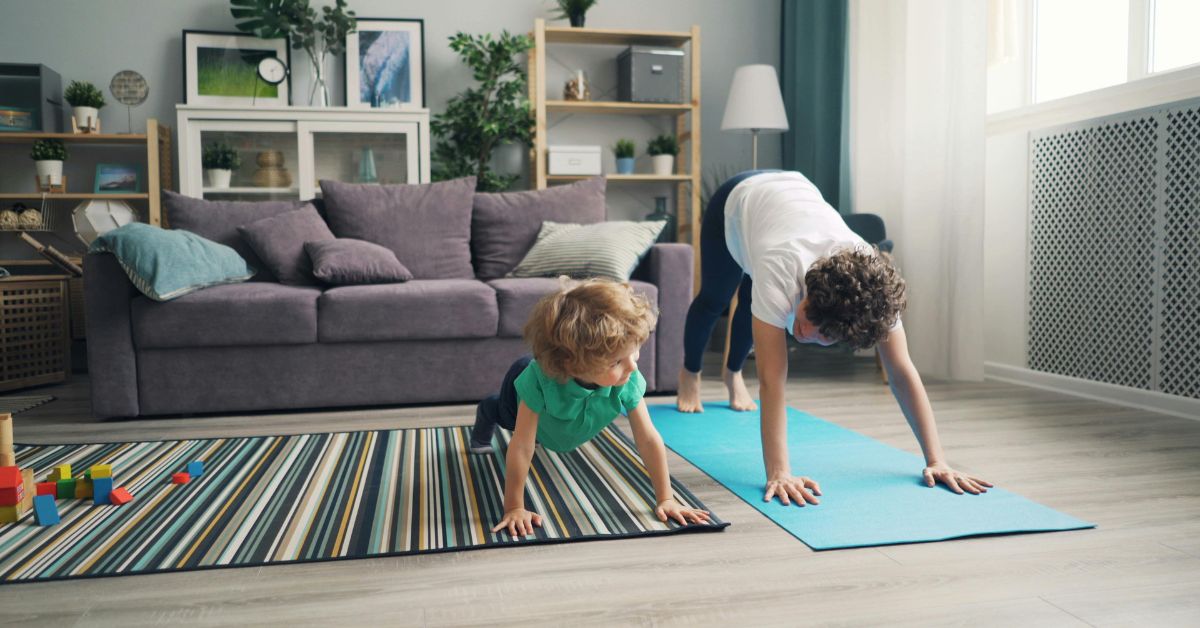One of the beautiful things about homeschooling is the freedom to customize your child’s education. You get to ditch the rigid schedules and create a learning environment that truly fits your family. While we spend a lot of time mapping out math, science, and history, it’s just as important to integrate lessons on well-being. Thinking about healthy habits for homeschoolers doesn’t have to be another complicated subject to plan. Instead, it can be woven into the fabric of your daily life, making wellness a natural and enjoyable part of your homeschool journey. It’s about more than just checking a box for physical education; it’s about giving your kids the tools they need to live a healthy, happy life long after they’ve graduated from your kitchen table classroom.
Homeschool health education offers a unique chance to go beyond textbook diagrams and classroom lectures. You can turn your home into a hands-on lab for learning about nutrition, fitness, mental health, and more. This approach makes lessons stick because kids are living what they learn. When they help you plan a balanced meal, they understand nutrients in a practical way. When you take a nature walk to identify plants, you’re combining science with physical activity.
This integrated method ensures that health isn’t just a subject; it’s a lifestyle. It empowers children to make smart choices for their bodies and minds, building a strong foundation for lifelong wellness.
Fueling The Brain: Nutrition Made Fun And Easy
Let’s be honest, the kitchen can feel like a battleground. Between picky eaters and the constant demand for snacks, teaching nutrition can seem daunting. But because you’re at home, you have the perfect setting for hands-on learning. Forget boring food pyramids and dry lectures. It’s time to get your kids excited about what’s on their plate.
The key is making it interactive. When kids are involved in the process, they’re more likely to try new things and understand the “why” behind healthy eating. Teaching kids wellness at home starts in the kitchen. Turn meal prep into a fun, educational activity where they can learn about different food groups, how food fuels their bodies, and where their meals come from.
Here are some simple ways to make nutrition a fun part of your homeschool day:
- Kitchen Classroom: Let your kids be your little sous chefs. Even young children can help with simple tasks.
- Toddlers & Preschoolers: Can wash vegetables, stir ingredients in a bowl, or tear up lettuce for a salad.
- Elementary Age: Can help measure ingredients (hello, math practice!), crack eggs, and use a butter knife to cut soft foods.
- Middle & High Schoolers: Can take on more complex tasks like following a recipe, chopping vegetables, and even planning a meal for the family once a week.
- Theme Nights: Add some flair to your weekly menu. A “Taste of Italy” night can be a lesson in geography and culture while you make whole-wheat pasta with a veggie-packed sauce. “Mexican Fiesta” night can introduce them to beans, avocados, and colorful peppers.
- Gardening Adventures: You don’t need a huge yard to teach kids where food comes from. A small container garden on a patio or even a pot of herbs on a windowsill can be a powerful teaching tool. When children plant a seed and watch it grow, they develop a connection to their food. They’ll be much more excited to eat a tomato they grew themselves. This is also a fantastic, ongoing science experiment!
- “Eat the Rainbow” Challenge: Make a chart and challenge your kids to eat something from every color of the rainbow each day or week. Red strawberries, orange carrots, yellow bananas, green spinach, blueberries, and purple grapes. This simple game encourages a variety of fruits and vegetables, ensuring they get a wide range of vitamins and minerals.

Move It, Move It: Healthy Habits For Homeschoolers In Action
One common misconception about homeschooling is that kids sit at the kitchen table all day. We know that’s far from the truth! The flexibility of homeschooling is your superpower when it comes to physical fitness. You can break free from the traditional, often dreaded, gym class model and find activities your child genuinely loves. The goal is to build a positive relationship with movement, showing them that being active is fun, not a chore.
Integrating movement throughout the day is more effective than trying to cram it into one block of time. Regular “brain breaks” involving physical activity can improve focus, reduce wiggles, and boost learning. This is a core component of creating healthy habits for homeschoolers. It’s about weaving activity into your daily rhythm.
Here’s how to get your family moving:
- Brain Break Bonanza: Set a timer for every 45-60 minutes of focused schoolwork. When it goes off, it’s time for a 5-10 minute movement break.
-
- Put on some music and have a dance party.
-
- Do a series of stretches, animal walks (bear crawl, crab walk), or yoga poses.
-
- Challenge everyone to a “how many jumping jacks can you do in a minute” contest.
-
- Head outside for a quick run around the yard.
- Active Learning: Combine subjects with movement.
- Math: Practice multiplication tables while jumping on a trampoline or tossing a ball back and forth.
- Spelling: Write spelling words with sidewalk chalk outside.
- Science: Go on a nature walk to identify trees, insects, and birds. This doubles as a science lesson and exercise.
- History: Learning about ancient Greece? Try practicing some Olympic events like a (safe) discus throw with a frisbee or a long jump in the yard.
- Explore Local Resources: Take advantage of what your community has to offer. Sign up for classes at the local rec center, join a homeschool sports league, or simply explore different parks and hiking trails. This also provides great opportunities for socialization.
- Make it a Family Affair: Lead by example. When your kids see you enjoying physical activity, they’re more likely to join in. Plan active family outings on weekends, like bike rides, hikes, or a trip to the swimming pool. A family that plays together, stays healthy together!
Beyond The Body: Nurturing Mental And Emotional Wellness
A truly holistic homeschool health education goes beyond diet and exercise. It’s crucial to teach our children how to understand and manage their emotions, build resilience, and take care of their mental well-being. In the safe and supportive environment of home, you can have open conversations about feelings and equip your kids with healthy coping strategies. This is perhaps one of the most valuable life skills you can impart.
By normalizing conversations about mental health, you create a space where your child feels comfortable coming to you with their worries and struggles. Teaching them to identify their emotions—whether it’s frustration with a difficult math problem, sadness over a conflict with a friend, or anxiety about a new situation—is the first step. The next is giving them a toolbox of strategies to navigate those feelings constructively.
You can embed these lessons into your daily routine. For example, start the day with a simple check-in, asking, “How are you feeling today?” and sharing your own feelings. When conflicts arise, use them as teachable moments to practice communication and problem-solving. Reading stories that involve characters dealing with complex emotions can also open the door to important discussions. Simple practices like mindfulness exercises or keeping a gratitude journal can become powerful habits that support mental clarity and a positive outlook for years to come.
Keep Learning With DKM Homeschool Resource
Building a healthy lifestyle is a marathon, not a sprint. The ideas here are just a starting point for the amazing, customized health education you can provide at home. Every family’s journey is unique, so find what works for you and have fun with it!
Are you looking for more practical advice, curriculum reviews, and encouragement for your homeschooling adventure? Dive into our other blog posts! We have a treasure trove of resources designed to support you every step of the way. From managing different learning styles to finding the best math curriculum, DKM Homeschool Resource is here to help you succeed.




